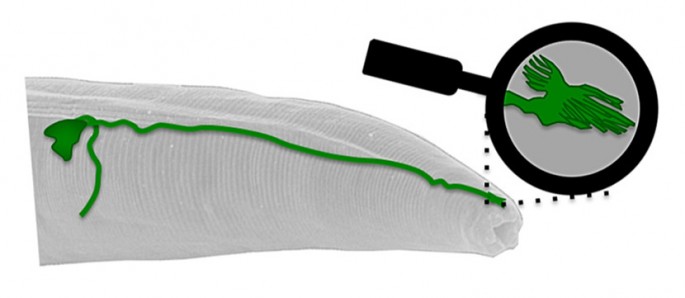Animals such as turtles, migrating geese and even wolves are known to use the Earth's magnetic field to navigate themselves and now a team of scientists have finally figured out the specific mechanism in animals that is used in detecting the planet's magnetic field.
Researchers from the University of Texas in Austin have apparently discovered a structure inside the brain of worm called C. Elegans which works similarly to a small antenna that can detect the magnetic field of the planet, helping the worm navigate itself underground.
Scientists have examined this special cell that is used specifically for this function that uses a magnetic sensor called an AFD neuron. Scientists already know that this neuron already helps in the detection of temperature and carbon dioxide levels however this new research reveals that this is also sensitive to magnetic sources as well.
Using the planet's magnetism and this special sensor, the worms can detect which direction goes south or downwards to help them find their way underground.
According to Jon Pierce-Shimomura who is an assistant professor of neuroscience from the College of Natural Sciences from the University of Texas, these same molecules used by worms can also be utilized by butterflies and birds that provides important insight about magnetosensation in animals.
During the research, scientists found out that hungry worms tend to travel in a downward direction which is a strategy they use when they hunt for food.
However, when researchers transferred the worms to another part of the world, the worms apparently did not move down at all. Regardless if they were from different parts of the world like Hawaii or Australia, the worms still moved at a specific angle where they thought it was a downward direction back home.
The worms from Australia apparently moved upwards since the Earth's magnetic field differs from various regions on the globe where the worms' magnetic field compass is adapted to its native environment that determines which way is up or down.
This study is published in the journal eLife.



























